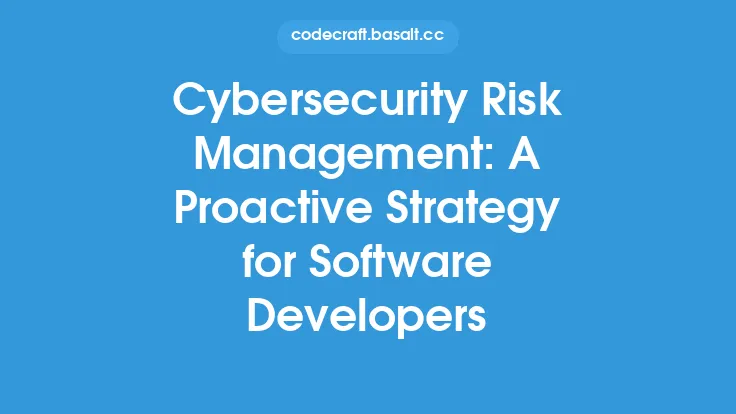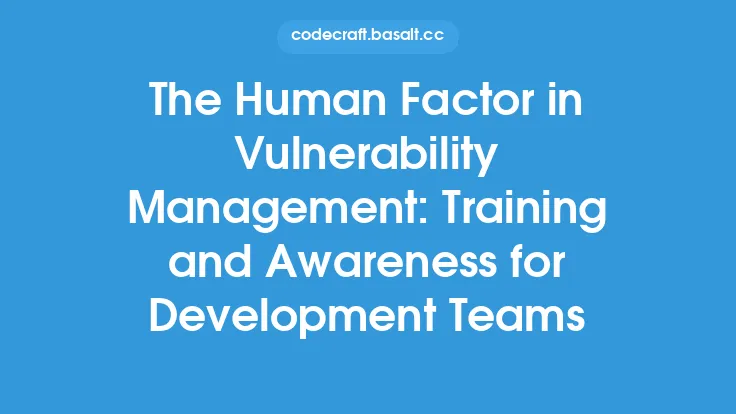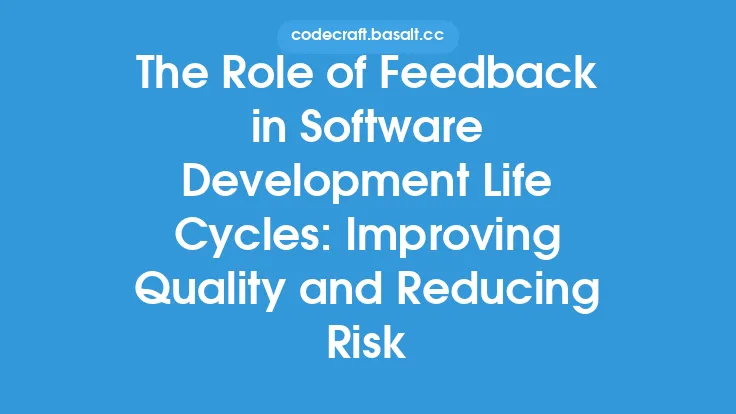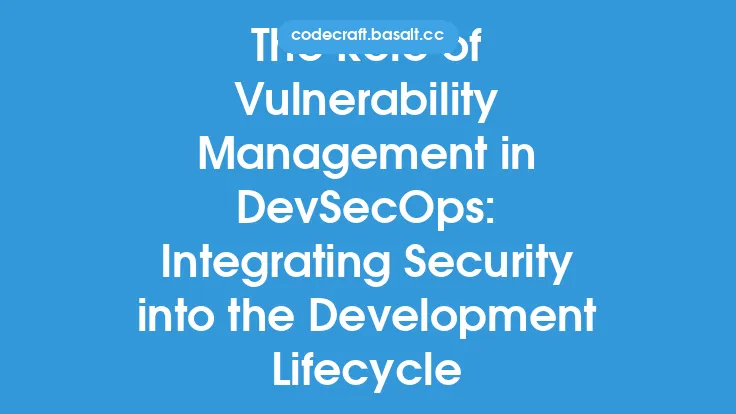Cybersecurity risk management is an essential aspect of the software development lifecycle. As software applications become increasingly complex and interconnected, the potential for security vulnerabilities and breaches grows. Effective risk management is critical to identifying, assessing, and mitigating these risks, ensuring the confidentiality, integrity, and availability of sensitive data and systems. In this article, we will delve into the importance of cybersecurity risk management in the software development lifecycle, exploring the key principles, methodologies, and best practices that underpin this critical discipline.
Introduction to Cybersecurity Risk Management
Cybersecurity risk management is a systematic approach to identifying, assessing, and mitigating potential security risks in software applications. It involves a comprehensive evaluation of the potential threats, vulnerabilities, and consequences of a security breach, as well as the implementation of controls and countermeasures to reduce or eliminate these risks. The goal of cybersecurity risk management is to ensure that software applications are designed and developed with security in mind, minimizing the potential for security breaches and protecting sensitive data and systems.
Integrating Cybersecurity Risk Management into the Software Development Lifecycle
The software development lifecycle (SDLC) encompasses all the phases involved in the development of a software application, from requirements gathering to deployment and maintenance. Cybersecurity risk management should be integrated into each phase of the SDLC, ensuring that security is considered throughout the development process. This includes:
- Requirements gathering: Identifying security requirements and ensuring that they are incorporated into the software design
- Design: Implementing secure design principles and patterns to minimize the potential for security vulnerabilities
- Implementation: Writing secure code and implementing security controls and countermeasures
- Testing: Conducting security testing and vulnerability assessments to identify and remediate security defects
- Deployment: Ensuring that the software application is deployed in a secure environment, with appropriate security controls and countermeasures in place
- Maintenance: Continuously monitoring and updating the software application to ensure that it remains secure and up-to-date
Key Principles of Cybersecurity Risk Management
There are several key principles that underpin effective cybersecurity risk management, including:
- Risk assessment: Identifying and assessing potential security risks, including threats, vulnerabilities, and consequences
- Risk mitigation: Implementing controls and countermeasures to reduce or eliminate identified security risks
- Risk monitoring: Continuously monitoring and reviewing the effectiveness of security controls and countermeasures
- Risk communication: Communicating security risks and mitigation strategies to stakeholders, including developers, users, and management
- Security by design: Incorporating security into the software design and development process, rather than treating it as an afterthought
Methodologies and Frameworks for Cybersecurity Risk Management
There are several methodologies and frameworks that can be used to support cybersecurity risk management, including:
- NIST Cybersecurity Framework: A widely adopted framework that provides a structured approach to managing cybersecurity risk
- ISO 27001: An international standard that provides a framework for implementing and maintaining an information security management system (ISMS)
- OWASP Risk Rating Methodology: A methodology for assessing and prioritizing security risks in software applications
- FAIR (Factor Analysis of Information Risk): A framework for quantifying and managing cybersecurity risk
Best Practices for Cybersecurity Risk Management
There are several best practices that can be used to support effective cybersecurity risk management, including:
- Conduct regular security assessments and vulnerability scans: Identifying and remediating security vulnerabilities and defects
- Implement secure coding practices: Writing secure code and using secure coding techniques, such as input validation and error handling
- Use secure design patterns and principles: Implementing secure design patterns and principles, such as separation of duties and least privilege
- Continuously monitor and update software applications: Ensuring that software applications remain secure and up-to-date, with the latest security patches and updates
- Provide security training and awareness: Educating developers, users, and management on cybersecurity risks and best practices
Technical Considerations for Cybersecurity Risk Management
There are several technical considerations that should be taken into account when implementing cybersecurity risk management, including:
- Network security: Implementing firewalls, intrusion detection and prevention systems, and other network security controls
- Cryptography: Using encryption and other cryptographic techniques to protect sensitive data
- Access control: Implementing access control mechanisms, such as authentication and authorization, to restrict access to sensitive data and systems
- Secure coding: Writing secure code and using secure coding techniques, such as input validation and error handling
- Vulnerability management: Identifying and remediating security vulnerabilities and defects in software applications and systems
Conclusion
Cybersecurity risk management is a critical aspect of the software development lifecycle, ensuring that software applications are designed and developed with security in mind. By integrating cybersecurity risk management into each phase of the SDLC, and using key principles, methodologies, and best practices, organizations can minimize the potential for security breaches and protect sensitive data and systems. As software applications continue to evolve and become increasingly complex, the importance of cybersecurity risk management will only continue to grow, making it an essential discipline for software developers, security professionals, and organizations alike.





